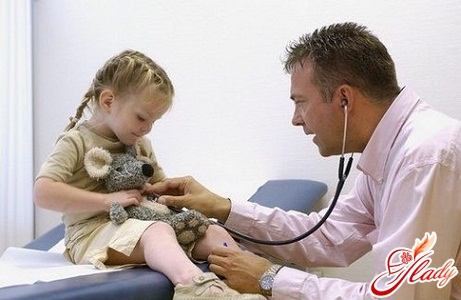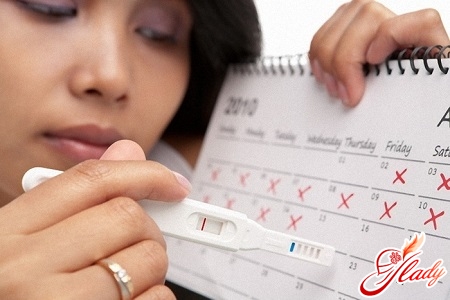 Chronic adnexitis.This diagnosis is made daily to a huge number of women, regardless of their age. And often it is women themselves who are to blame for this disease. Adnexitis is an inflammatory process of the genitals. Adnexitis can occur in both acute and chronic forms. How pronounced the course of the disease will be in a woman depends on how large an area the inflammatory process occupied, what exactly provoked the inflammation, on the general state of health, in particular, on the work of the immune system.
Chronic adnexitis.This diagnosis is made daily to a huge number of women, regardless of their age. And often it is women themselves who are to blame for this disease. Adnexitis is an inflammatory process of the genitals. Adnexitis can occur in both acute and chronic forms. How pronounced the course of the disease will be in a woman depends on how large an area the inflammatory process occupied, what exactly provoked the inflammation, on the general state of health, in particular, on the work of the immune system.
Signs of adnexitis
As a rule, for an experienced doctor - gynecologistDiagnosis of this disease is not difficult. There are a number of signs and complaints of a woman, on the basis of which one can suspect the presence of adnexitis. In addition, sick women complain of symptoms such as:
- Hyperthermia of the body
With this disease, an increase is possiblebody temperature, often to very significant figures. And the more acute the inflammatory process, the higher the body temperature. In chronic adnexitis, there may be no increase in body temperature at all.
- A malaise similar to a cold
A woman may complain of chills, headache, a feeling of severe weakness, nausea, which occurs with significant intoxication of the body.
- Painful sensations
A woman may complain of pain of varying intensity. The pain is localized in the lower abdomen and may radiate to the lumbar region or even the hip.
- Vaginal discharge
In addition to pain, with adnexitis in women,Typically, specific vaginal discharge appears. This discharge can be serous, mucous or purulent, causing irritation and itching in the genital area.
Chronic form of adnexitis
Often acute adnexitis without proper treatmentflows into a chronic form. Periodically, adnexitis worsens, and the woman's health deteriorates significantly - weakness appears, the intensity of pain and the amount of discharge increase. About half of all women suffering from chronic adnexitis experience complications such as dysfunction of the reproductive system, lack of sexual desire. In addition, very often such patients experience dysfunction of the digestive system, in particular, dysbacteriosis. And from the urinary system, such complications as cystitis, pyelonephritis, bacteriuria are possible. Pain in chronic adnexitis is dull and systematic. With physical exertion, sexual intercourse, menstruation, after hypothermia or in a state of stress, the intensity of pain can increase significantly. In addition, chronic adnexitis in almost all cases leads to significant disorders of the menstrual cycle - menstruation is either too heavy or scanty, but prolonged. Also, chronic adnexitis can lead to adhesions in the fallopian tubes, resulting in obstruction of the tubes and, as a consequence, secondary infertility.
Causes of the disease
The most common causative agents of chronic adnexitis areare gonococci, streptococci, staphylococci and E. coli. As a rule, these pathogens are activated if the woman's immunity is reduced. That is, these pathogens can be in the woman's body for a long time without manifesting themselves in any way. But as soon as the immune system is disrupted, chronic adnexitis develops. In addition, there are a number of other peculiar "triggers": sex during menstruation, hypothermia, severe fatigue or stress, gastrointestinal diseases, endometriosis. In addition, the development of the disease can be provoked by childbirth, abortions and any other manipulations in the uterine cavity: diagnostic curettage, examination of the uterus and fallopian tubes. The pathogen can get into the fallopian tubes in several ways:
- The ascending path. The causative agent penetrates first into the woman's vagina, then into the cervical canal. And from there it gets into the uterine cavity, fallopian tubes and ovaries.
- The Descending Way. The causative agent enters the intestine from the peritoneum.
- The lymphogenous path. The causative agent enters the uterus and tubes with a current of lymph.
- Hematogenous pathway. Penetration of the pathogen occurs with the blood flow.

Diagnosis of the disease
In order to diagnose chronicadnexitis, the doctor will ask the woman in detail about the features of the disease and conduct a number of necessary studies. Such studies include: a bimanual gynecological examination, a gynecological smear for flora, an ultrasound examination and a microbiological examination, and a study of the contents of the fallopian tubes. In order to identify the sources of purulent formations and examine the fallopian tubes, it is necessary to perform a laparoscopy. It is necessary not only for diagnosis, but also for the subsequent treatment of both acute and chronic adnexitis. Also, to determine the patency of the fallopian tubes and the severity of the inflammatory process, the doctor may prescribe an X-ray examination of the uterus and fallopian tubes. A laboratory study of the blood test allows you to determine the level of leukocytes, indicating the presence of an inflammatory process in the woman's body. Based on complex data, the doctor diagnoses the disease and prescribes the necessary treatment.
Treatment of adnexitis
In the event that a woman felt a sharp painpain in the lower abdomen, you need to seek medical help as soon as possible. In no case should you take any painkillers before seeing a doctor, as this may complicate subsequent diagnosis of the disease. If adnexitis is acute, the woman should be hospitalized in the gynecological department. She is prescribed complete rest - both physical and psychological. The doctor will examine the woman and prescribe the necessary treatment: painkillers, anti-inflammatory drugs and antibacterial drugs. After the symptoms of acute adnexitis are relieved, the woman will have to undergo physiotherapy: electrophoresis with zinc, magnesium, potassium, on the lower abdomen, as well as vibration massage and ultrasound. These measures help to reduce pain, relieve tissue swelling. In addition, they significantly contribute to the resorption of adhesions in the fallopian tubes. Exactly the same treatment is necessary if adnexitis is chronic. Remember that you need to take your health very seriously. Sometimes the slightest ailment can turn into serious problems, the elimination of which will require a significant amount of effort, time, and sometimes money, because if you have chronic adnexitis, the treatment will be long and painful. We recommend reading:









